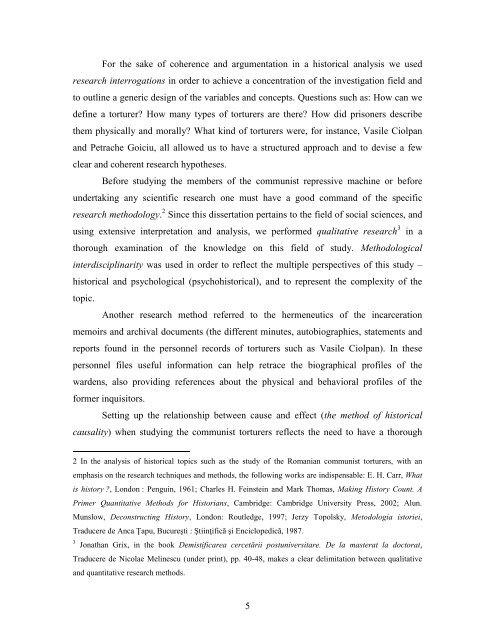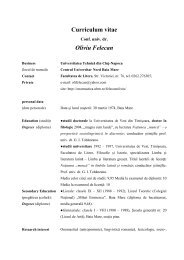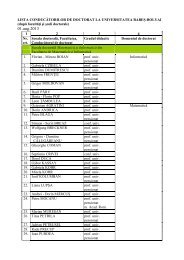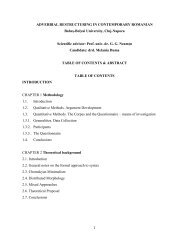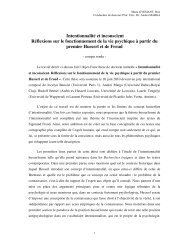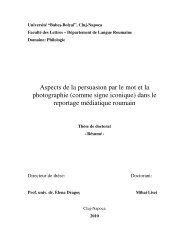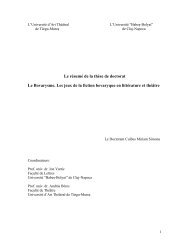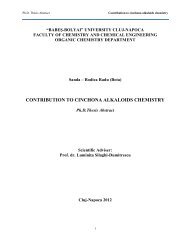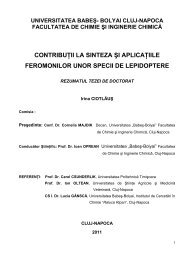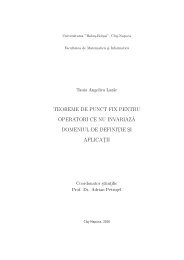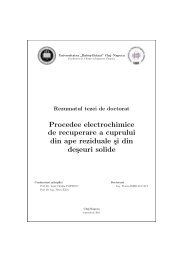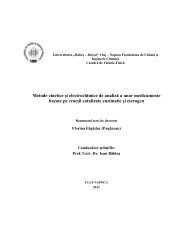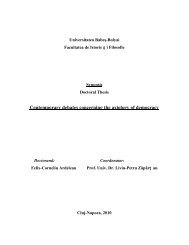The image of the communist torturer as reflected
The image of the communist torturer as reflected
The image of the communist torturer as reflected
Create successful ePaper yourself
Turn your PDF publications into a flip-book with our unique Google optimized e-Paper software.
For <strong>the</strong> sake <strong>of</strong> coherence and argumentation in a historical analysis we used<br />
research interrogations in order to achieve a concentration <strong>of</strong> <strong>the</strong> investigation field and<br />
to outline a generic design <strong>of</strong> <strong>the</strong> variables and concepts. Questions such <strong>as</strong>: How can we<br />
define a <strong>torturer</strong>? How many types <strong>of</strong> <strong>torturer</strong>s are <strong>the</strong>re? How did prisoners describe<br />
<strong>the</strong>m physically and morally? What kind <strong>of</strong> <strong>torturer</strong>s were, for instance, V<strong>as</strong>ile Ciolpan<br />
and Petrache Goiciu, all allowed us to have a structured approach and to devise a few<br />
clear and coherent research hypo<strong>the</strong>ses.<br />
Before studying <strong>the</strong> members <strong>of</strong> <strong>the</strong> <strong>communist</strong> repressive machine or before<br />
undertaking any scientific research one must have a good command <strong>of</strong> <strong>the</strong> specific<br />
research methodology. 2 Since this dissertation pertains to <strong>the</strong> field <strong>of</strong> social sciences, and<br />
using extensive interpretation and analysis, we performed qualitative research 3 in a<br />
thorough examination <strong>of</strong> <strong>the</strong> knowledge on this field <strong>of</strong> study. Methodological<br />
interdisciplinarity w<strong>as</strong> used in order to reflect <strong>the</strong> multiple perspectives <strong>of</strong> this study –<br />
historical and psychological (psychohistorical), and to represent <strong>the</strong> complexity <strong>of</strong> <strong>the</strong><br />
topic.<br />
Ano<strong>the</strong>r research method referred to <strong>the</strong> hermeneutics <strong>of</strong> <strong>the</strong> incarceration<br />
memoirs and archival documents (<strong>the</strong> different minutes, autobiographies, statements and<br />
reports found in <strong>the</strong> personnel records <strong>of</strong> <strong>torturer</strong>s such <strong>as</strong> V<strong>as</strong>ile Ciolpan). In <strong>the</strong>se<br />
personnel files useful information can help retrace <strong>the</strong> biographical pr<strong>of</strong>iles <strong>of</strong> <strong>the</strong><br />
wardens, also providing references about <strong>the</strong> physical and behavioral pr<strong>of</strong>iles <strong>of</strong> <strong>the</strong><br />
former inquisitors.<br />
Setting up <strong>the</strong> relationship between cause and effect (<strong>the</strong> method <strong>of</strong> historical<br />
causality) when studying <strong>the</strong> <strong>communist</strong> <strong>torturer</strong>s reflects <strong>the</strong> need to have a thorough<br />
2 In <strong>the</strong> analysis <strong>of</strong> historical topics such <strong>as</strong> <strong>the</strong> study <strong>of</strong> <strong>the</strong> Romanian <strong>communist</strong> <strong>torturer</strong>s, with an<br />
emph<strong>as</strong>is on <strong>the</strong> research techniques and methods, <strong>the</strong> following works are indispensable: E. H. Carr, What<br />
is history ?, London : Penguin, 1961; Charles H. Feinstein and Mark Thom<strong>as</strong>, Making History Count. A<br />
Primer Quantitative Methods for Historians, Cambridge: Cambridge University Press, 2002; Alun.<br />
Munslow, Deconstructing History, London: Routledge, 1997; Jerzy Topolsky, Metodologia istoriei,<br />
Traducere de Anca Ţapu, Bucureşti : Ştiinţificã şi Enciclopedicã, 1987.<br />
3 Jonathan Grix, in <strong>the</strong> book Demistificarea cercetării postuniversitare. De la m<strong>as</strong>terat la doctorat,<br />
Traducere de Nicolae Melinescu (under print), pp. 40-48, makes a clear delimitation between qualitative<br />
and quantitative research methods.<br />
5


